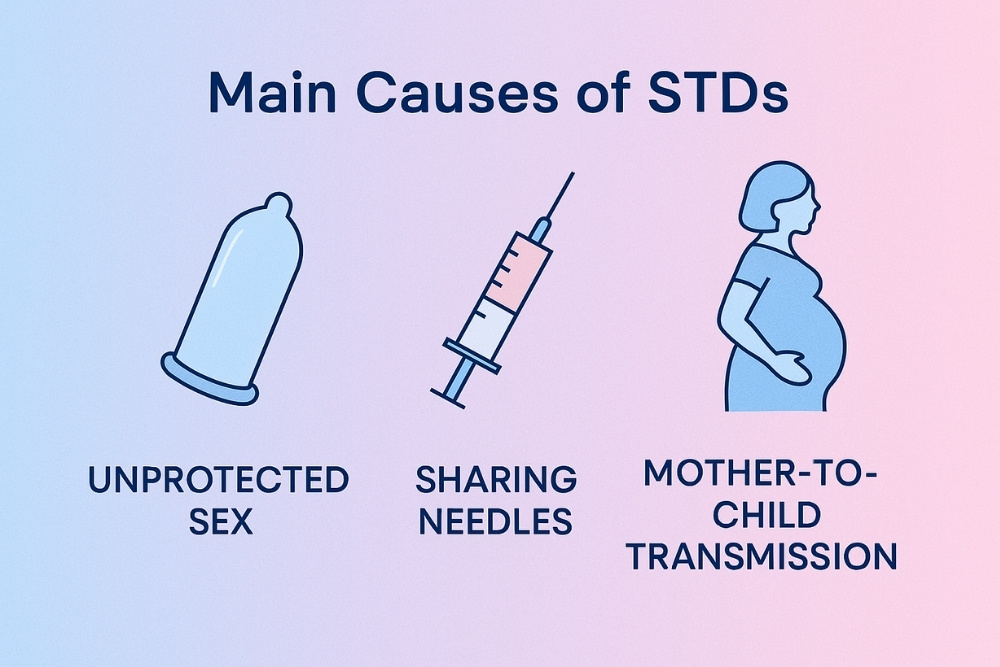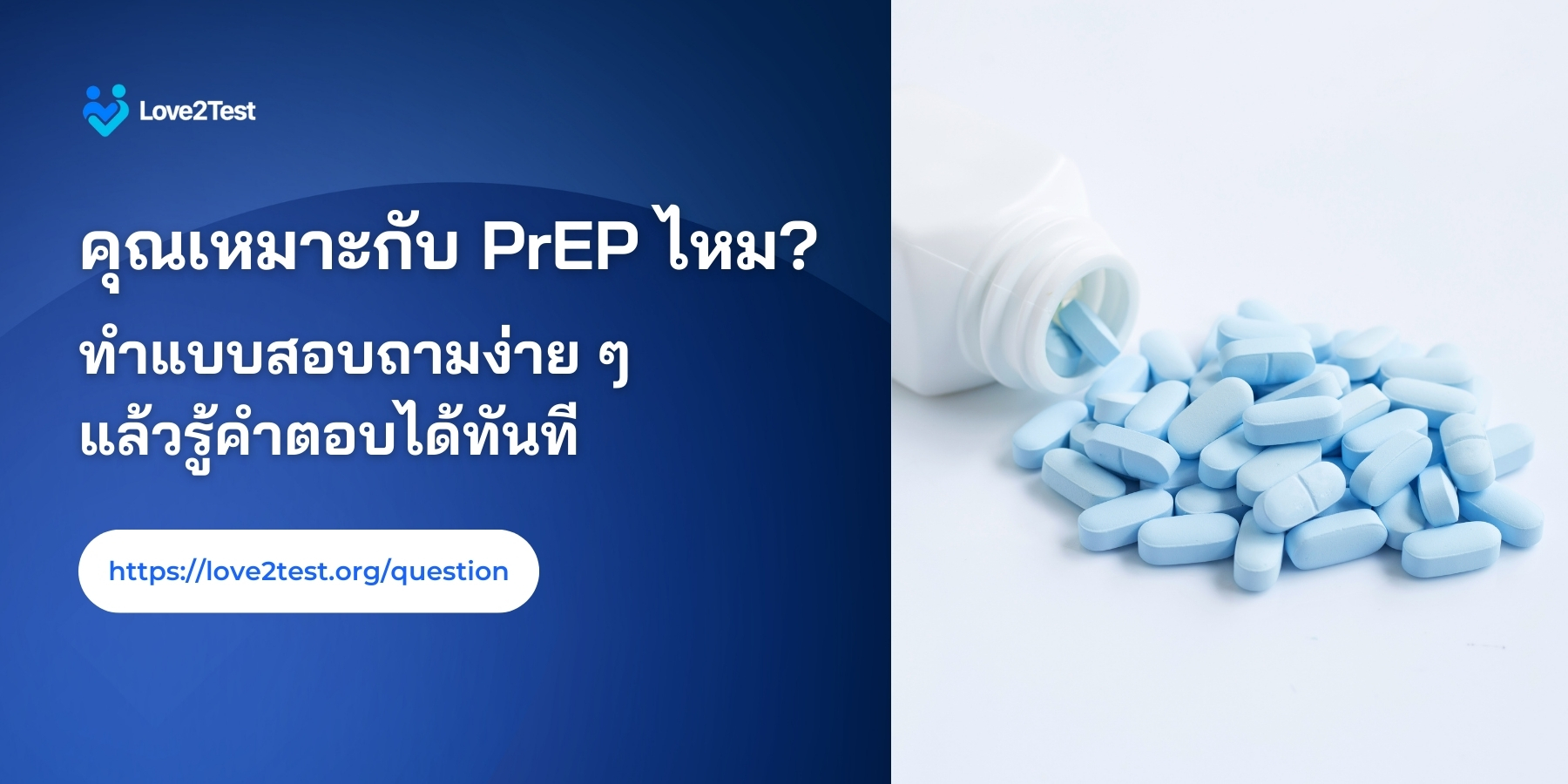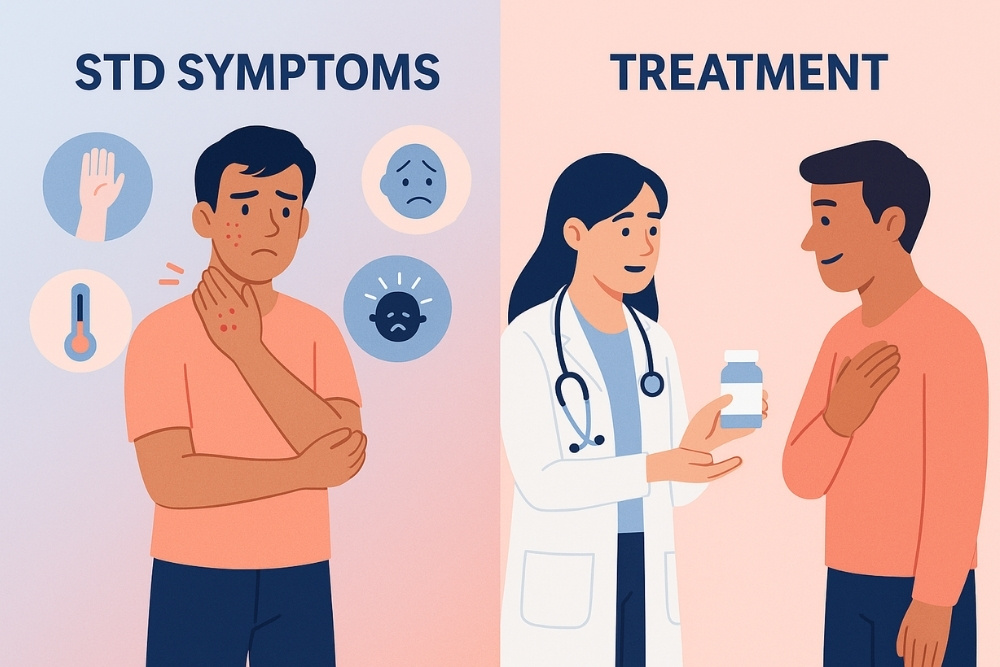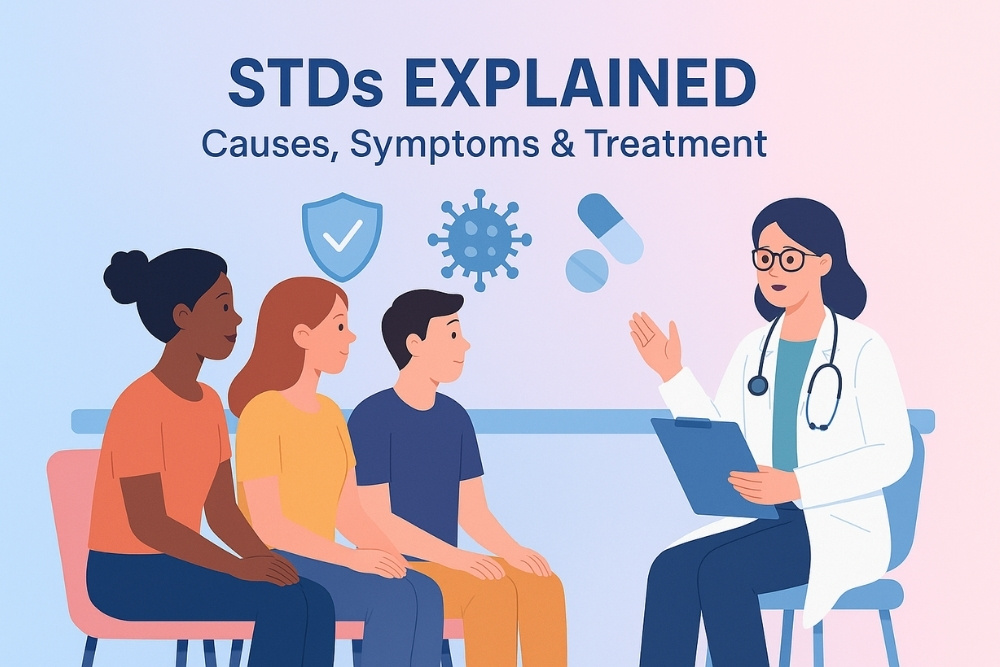STDs Explained — or Sexually Transmitted Infections (STIs) — are diseases that can be transmitted through unprotected sexual contact. As the name suggests, these infections spread during sexual activity without proper protection. Known in Thai as “กามโรค” (gam-rok), STDs can be passed through the genitals, vagina, anus, or mouth, as well as by contact with infected bodily fluids such as blood, semen, vaginal secretions, and other body fluids. Transmission can also occur from mother to child during pregnancy or childbirth, and through sharing needles or injection equipment with others.
STDs Explained – What Behaviors Increase Your Risk of Infection?
- Sharing needles or injection equipment with others
- Having sexual intercourse without using a condom
- Frequently changing sexual partners or having sex with sex workers

STDs Explained – Understanding the Different Types of Sexually Transmitted Diseases
STDs, also known as sexually transmitted infections (STIs), are generally categorized based on the type of microorganism that causes the infection. The main groups include bacterial, viral, parasitic, and fungal infections.

1. Bacterial Infections
- Syphilis (Treponema pallidum)
- Syphilis is caused by the bacterium Treponema pallidum, which is so small that it can spread throughout the entire body. Although some may think syphilis is less severe compared to other STDs, it can cause significant physical and emotional distress. Recent data indicate a growing number of cases, to the extent that health authorities in Thailand have declared a syphilis outbreak, making it essential to understand and prevent this infection.
- Gonorrhea (Neisseria gonorrhoeae)
- Gonorrhea, caused by the bacterium Neisseria gonorrhoeae, presents different symptoms in men and women. The infection usually shows symptoms within a week after exposure, although some people may remain asymptomatic while still being contagious.
- Chlamydia (Chlamydia trachomatis)
- Caused by Chlamydia trachomatis, this infection differs from gonorrhea but is just as common, particularly among teenagers and young adults. Some individuals may not show symptoms at all but can still transmit the infection to others during unprotected sex. While chlamydia symptoms are often milder than gonorrhea, it still requires proper medical treatment to prevent complications.
- Chancroid (Haemophilus ducreyi)
- Chancroid is caused by Haemophilus ducreyi, leading to painful ulcers on or around the genitals. Although symptoms may differ slightly between men and women, the infection causes significant discomfort and tissue damage in both.
2. Viral Infections
This group includes Herpes, Genital Warts (HPV), Molluscum Contagiosum, Hepatitis B, and Hepatitis C.
- Herpes (HSV-1 and HSV-2) Herpes is a lifelong viral infection caused by two main strains: Herpes Simplex Virus type 1 (HSV-1) and type 2 (HSV-2). While often classified as an STD, herpes can also spread through non-sexual contact, such as kissing or sharing utensils. It is considered one of the most easily transmissible infections.
- Genital Warts (HPV) Caused by the Human Papillomavirus (HPV), particularly strains 6 and 11, genital warts are among the most common viral STDs. There are over 150 identified HPV strains, and while many are harmless, some high-risk types are linked to cervical and anal cancers.
- Molluscum Contagiosum (MCV) This infection is caused by the Molluscum Contagiosum Virus (MCV) and can occur in people of all ages—from infants to the elderly. It causes small, dome-shaped lesions on the skin. In children aged 1–10, the infection can spread easily due to weaker immunity, while healthy adults often recover naturally within a year. Parents should take precautions to prevent children from contracting this infection.
- Hepatitis B and C Both Hepatitis B (HBV) and Hepatitis C (HCV) can be transmitted sexually, through contact with infected blood, or from mother to child. These viruses cause liver inflammation and can lead to chronic liver disease, cirrhosis, or liver cancer if left untreated.
- Human Papillomavirus (HPV) In addition to genital warts, HPV infection is a major cause of cervical, anal, and throat cancers. Vaccination is the most effective way to prevent infection and related complications.
3. Parasitic Infections
This group includes pubic lice (crabs), scabies, and trichomoniasis. These infections are caused by small parasites that live on the skin or inside the genital area, causing itching, irritation, and inflammation. They are usually transmitted through close physical or sexual contact.
4. Fungal Infections

The most common fungal STD is vaginal yeast infection, caused by the overgrowth of Candida fungus. It leads to itching, discharge, and discomfort in the genital area. Though not always sexually transmitted, it often appears after antibiotic use or in individuals with weakened immune systems.

Symptoms of Sexually Transmitted Diseases
People infected with sexually transmitted diseases (STDs) or sexually transmitted infections (STIs) may experience a wide range of symptoms depending on the type of infection. These symptoms can appear only in the genital area or affect other parts of the body. In some cases, an infected person may not show any noticeable symptoms at all, yet still carry and transmit the infection to others.
Common warning signs and symptoms include:
- Rashes, bumps, or blisters appearing on the genitals, mouth, or anal area
- In women: abnormal vaginal discharge that has an unusual color or strong odor, such as a fishy or foul smell, or persistent vaginal itching lasting several weeks
- In men: discharge of pus or fluid from the penis and a burning sensation during urination
- Pain, stinging, or discomfort during sexual intercourse
- Swollen lymph nodes in the groin area, often painful when touched
- Muscle aches, fever, or irritation in the genital area
- Other general symptoms such as body rashes, unexplained weight loss, fatigue, and loss of appetite
It’s important to note that STD symptoms don’t always appear immediately after infection. Some people may notice symptoms within 2–3 days, while others may take months or even years before any signs develop, depending on their immune system and health condition.
Additionally, STDs pose a serious risk during pregnancy. Infected mothers may experience miscarriage, premature birth, or even stillbirth if untreated. Therefore, all pregnant women should undergo STD screening and appropriate treatment to protect both themselves and their babies.
STDs Explained – How Are Treated?
The treatment of sexually transmitted diseases (STDs) or sexually transmitted infections (STIs) begins with a proper medical diagnosis. A doctor will assess the patient’s symptoms, medical history, and potential risk factors, followed by diagnostic tests such as blood tests, urine samples, or swabs of genital secretions. These laboratory tests help confirm the type of infection and determine the most appropriate treatment plan.
If the infection is caused by bacteria, it can usually be completely cured with proper medication. However, viral infections cannot be fully eradicated — instead, treatment focuses on managing symptoms, preventing complications, and reducing the risk of transmission.
Treatment for STDs is generally divided into two main categories:
1. Antibiotics
Antibiotics are used to treat infections caused by bacteria or parasites, such as gonorrhea, chlamydia, and syphilis. Patients must complete the full course of medication as prescribed, even if symptoms improve, to ensure the infection is fully cleared. It’s also important to avoid sexual activity until both the patient and their partner have recovered to prevent reinfection.
2. Antiviral Medications
Antiviral drugs are used to manage viral infections, such as Herpes (HSV). These medications help reduce symptoms, control outbreaks, and lower the risk of transmitting the virus to partners. However, the virus usually remains dormant in the body for life. When the immune system becomes weakened or stressed, symptoms may reappear. Therefore, patients should continue maintaining their health, take prescribed medication regularly, and always use protection during sexual intercourse to minimize the risk of spreading the infection.
STDs Explained – How to Prevent?
The most effective way to prevent sexually transmitted diseases (STDs) or sexually transmitted infections (STIs) is to avoid sexual activity altogether. However, for those who are sexually active, the best protection is to use condoms correctly and consistently every time you have sex. Condoms act as a physical barrier that helps prevent the transmission of infectious agents.
In addition to using condoms, there are several other important ways to reduce your risk of getting or spreading STDs:
- Have only one sexual partner (mutual monogamy): Staying in a mutually faithful relationship with an uninfected partner greatly lowers the risk of infection.
- Do not share needles or injection equipment: Sharing needles can transmit HIV, hepatitis, and other bloodborne infections.
- Get regular STD screenings: Routine testing helps detect infections early, even when there are no symptoms, ensuring timely treatment.
- Get vaccinated: Some STDs can be prevented through vaccination, such as the Hepatitis B vaccine and the HPV (Human Papillomavirus) vaccine, which also helps prevent cervical and other cancers.
In conclusion, STDs Explained can be effectively prevented by maintaining good overall health, practicing safe and responsible sexual behavior, and being faithful to one partner. Always use condoms correctly every time you have sex to reduce the risk of infection.
For added protection, some STDs can be prevented through vaccination, such as those caused by HPV and Hepatitis B. Getting vaccinated helps lower your chances of infection and protects your long-term sexual health. Simply put, a healthy lifestyle, safe sex, honesty in relationships, and preventive care are the best defenses against sexually transmitted diseases.
Reference:

